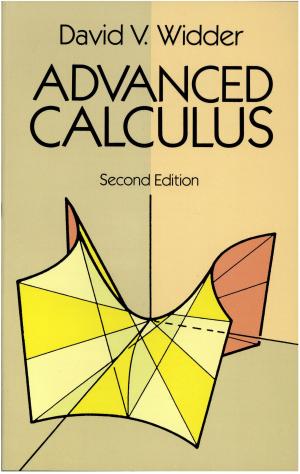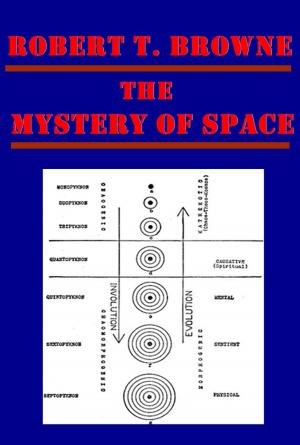An Elementary Treatise On Fourier's Series (Differential Calculus)
Nonfiction, Science & Nature, Mathematics, Differential Equations, Discrete Mathematics, Calculus| Author: | William Elwood Byerly, Ph.D. | ISBN: | 1230000154935 |
| Publisher: | Byerly | Publication: | July 26, 2013 |
| Imprint: | Language: | English |
| Author: | William Elwood Byerly, Ph.D. |
| ISBN: | 1230000154935 |
| Publisher: | Byerly |
| Publication: | July 26, 2013 |
| Imprint: | |
| Language: | English |
An Elementary Treatise On Fourier's Series (Differential Calculus) and Spherical, Cylindrical, and Ellipsoidal Harmonics, With Applications To Problems In Mathematical Physics.
By William Elwood Byerly, Ph.D.,
Professor Of Mathematics In Harvard University
~~~~~~~~~~~~~~~~~~~~~~~~~~~~~~~~~~~~~~~~~~~~~~~~~~~~~~~~~~~~~~~~~
A Fourier series is a specific type of infinite mathematical series involving trigonometric functions. The series gets its name from a French mathematician and physicist named Jean Baptiste Joseph, Baron de Fourier, who lived during the 18th and 19th centuries. Fourier series are used in applied mathematics, and especially in physics and electronics, to express periodic functions such as those that comprise communications signal waveform
Some waveforms are simple, such as the pure sine wave , but these are theoretical ideals. In the real world, most waveforms contain energy at harmonic frequencies (whole-number multiples of the lowest, or fundamental, frequency). The proportion of energy at harmonic frequencies, compared with the energy at the fundamental, depends on the waveform. Fourier series mathematically define such waveforms as functions of displacement (usually amplitude , frequency , or phase ) versus time .
As the number of calculated terms in a Fourier series increases, the series more and more closely approximates the exact function that defines a complex signal waveform. Computers can calculate Fourier series out to hundreds, thousands, or millions of terms.
About ten years ago I gave a course of lectures on Trigonometric Series. My course has been gradually modified and extended until it has become an introduction to Spherical Harmonics and Bessel's and Lame's Functions.
Two years ago my lecture notes were lithographed by my class for their own use and were found so convenient that I have prepared them for publication, hoping that they may prove useful to others as well as to my own students. Meanwhile, Professor Peirce has published his lectures on \The Newtonian Potential Function" (Boston, Ginn & Co.), and the two sets of lectures form a course given regularly at Harvard, and intended as a partial introduction to modern Mathematical Physics.
Students taking this course are supposed to be familiar with so much of the infinitesimal calculus as is contained in my Differential Calculus" and my Integral Calculus", to which I refer in the present book as Dif. Cal." and Int. Cal."
W. E. BYERLY.
An Elementary Treatise On Fourier's Series (Differential Calculus) and Spherical, Cylindrical, and Ellipsoidal Harmonics, With Applications To Problems In Mathematical Physics.
By William Elwood Byerly, Ph.D.,
Professor Of Mathematics In Harvard University
~~~~~~~~~~~~~~~~~~~~~~~~~~~~~~~~~~~~~~~~~~~~~~~~~~~~~~~~~~~~~~~~~
A Fourier series is a specific type of infinite mathematical series involving trigonometric functions. The series gets its name from a French mathematician and physicist named Jean Baptiste Joseph, Baron de Fourier, who lived during the 18th and 19th centuries. Fourier series are used in applied mathematics, and especially in physics and electronics, to express periodic functions such as those that comprise communications signal waveform
Some waveforms are simple, such as the pure sine wave , but these are theoretical ideals. In the real world, most waveforms contain energy at harmonic frequencies (whole-number multiples of the lowest, or fundamental, frequency). The proportion of energy at harmonic frequencies, compared with the energy at the fundamental, depends on the waveform. Fourier series mathematically define such waveforms as functions of displacement (usually amplitude , frequency , or phase ) versus time .
As the number of calculated terms in a Fourier series increases, the series more and more closely approximates the exact function that defines a complex signal waveform. Computers can calculate Fourier series out to hundreds, thousands, or millions of terms.
About ten years ago I gave a course of lectures on Trigonometric Series. My course has been gradually modified and extended until it has become an introduction to Spherical Harmonics and Bessel's and Lame's Functions.
Two years ago my lecture notes were lithographed by my class for their own use and were found so convenient that I have prepared them for publication, hoping that they may prove useful to others as well as to my own students. Meanwhile, Professor Peirce has published his lectures on \The Newtonian Potential Function" (Boston, Ginn & Co.), and the two sets of lectures form a course given regularly at Harvard, and intended as a partial introduction to modern Mathematical Physics.
Students taking this course are supposed to be familiar with so much of the infinitesimal calculus as is contained in my Differential Calculus" and my Integral Calculus", to which I refer in the present book as Dif. Cal." and Int. Cal."
W. E. BYERLY.















